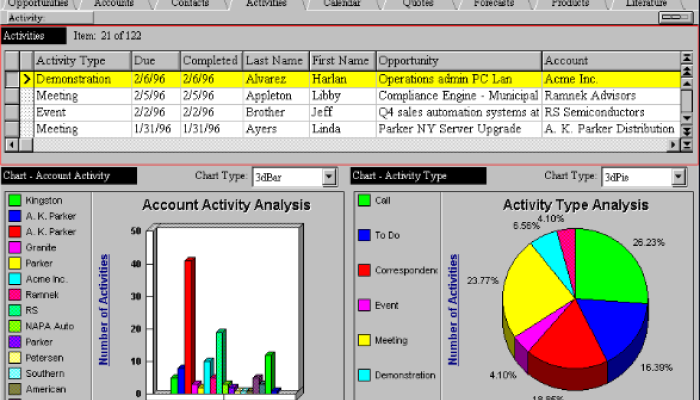
Image: Brett Hondow/shutterstock.com
The modern sales CRM (customer relationship management) software you use today has origins that go back farther than you may have realized. Let's take a brief look back at the history of CRM and how it has transformed sales.
The Origins of CRM
While the term "CRM" emerged in the late 20th century, the fundamental practices can be traced back to some of humanity's earliest trading activities. Even 20,000 years ago, traders in places like Papua New Guinea were keeping track of their buyers and sellers, their locations, and what they wanted to buy or sell.
As trade expanded across the ancient world, more advanced record-keeping and accounting methods emerged to manage these customer interactions. Names, locations, and financial details were all meticulously documented — the beginnings of a customer database.
One of the most fascinating precursors to the CRM emerged from the world of politics in the early 20th century. It was known as the Farley File, and it was developed by James Farley, the campaign manager for President Franklin D. Roosevelt.
The Farley File was a comprehensive set of records meticulously maintained by Farley. It contained detailed personal and professional information about the people that FDR and Farley encountered through their political activities. Using the Farley File, Roosevelt was able to impress the people he met by recalling seemingly obscure details about their lives. This allowed him to build stronger, more personalized relationships — a core tenet of effective CRM even today.
In 1956, Danish engineer Hildaur Neilsen invented the rolodex as a way for business people to store important contact information. The rolodex rose to popularity, and became the de-facto way for business professionals to store the contact information of their clients and partners. Individual rolodexes that had important contact information became valuable. This became the subject of countless lawsuits between companies and employees who attempted to bring their rolodexes with them to new jobs.
The Modern CRM
The concept of the modern CRM can be traced back to the 1970s, when businesses began using basic contact management software to store customer information. These early systems allowed salespeople to log customer details, account histories, and interactions. However, they were quite rudimentary, often little more than digital rolodexes.
In the 1980s, the first dedicated CRM software programs began to emerge. Companies like ACT! and Siebel Systems led the way, developing more robust platforms that could track not only contact info, but also leads, opportunities, and sales pipelines. This allowed sales teams to get a more comprehensive view of their customers and prospects.
As computers and databases became more sophisticated in the 1990s, CRM systems evolved as well. They began incorporating features like sales forecasting, marketing automation, and customer service tools. The goal was to provide a central hub where all customer-facing departments could collaborate and share information.
The Rise of Cloud-Based CRM
The 2000s saw a major shift in CRM with the emergence of cloud-based platforms. Rather than installing bulky on-premises software, companies could now access CRM tools through their web browsers. This made the systems more affordable and easier to deploy across an organization.
Leading players like Salesforce pioneered the cloud CRM model, and it quickly became the industry standard. Cloud-based CRMs offered several key advantages over traditional software like lower upfront costs, automatic updates, anytime/anywhere access, and the ability to scale up or down as needed.
Alongside the cloud, the rise of smartphones and tablets has had a profound impact on CRM. Mobile CRM apps allow sales reps to access customer data, update records, and even make sales—all from the palm of their hand.
This mobility has been a game-changer for many sales organizations. Reps can now stay connected and productive whether they're in the office, on the road, or meeting with a client. They can log call notes, schedule follow-ups, and pull up relevant account info in real-time.
The Future of the CRM
In recent years, CRM has become even more sophisticated, incorporating emerging technologies like AI and machine learning. These advanced capabilities are enhancing CRM in a variety of ways including AI-powered chatbots to automate customer service tasks, natural language processing for call transcriptions, and predictive analysis tools to forecast sales pipelines and identify high-value leads.
As a result, today's CRM platforms are serving as increasingly central hubs, connecting all customer data, communications, and workflows. This empowers sales teams to build deeper, more valuable relationships with their accounts. And no, we’re not going to end this article by encouraging you to open your CRM. Go out and grab a coffee instead!







